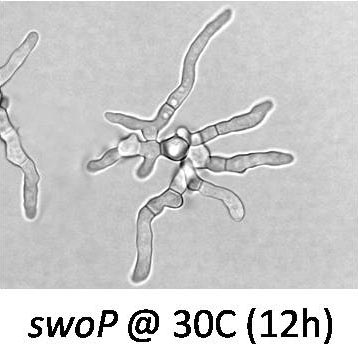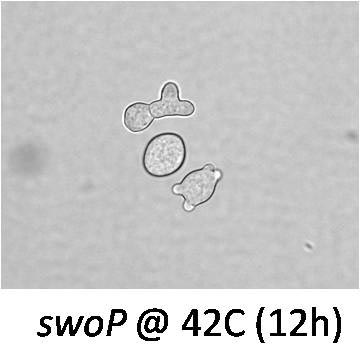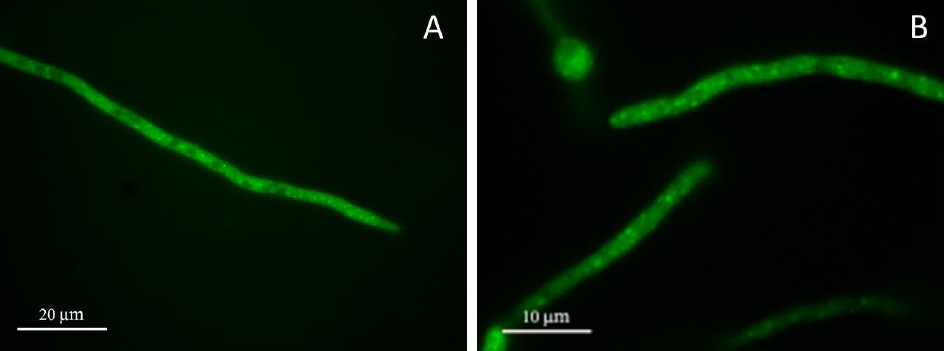

 |
 |
 |
By overexpressing known A. nidulans COG orthologues in swoP1 (COG4-defective) or podB1 (COG2-defective) mutant backgrounds, Sara has shown genetic interactions between COG4 and COG2 (over-expression of either can complement the other's phenotype) and between COG3 and COG2. Over-expression of COG3 complements the podB1 (COG2-defective) phenotype, but not that of swoP1. Overexpression of the remaining COG orthologues (COG1, COG6, and COG6) is without effect on either mutation. These results are consistent with proposed structures of the "A-lobes" of yeast and mammalian COGs.
 |
 |
Literature:
Gremillion, S. K., S. D. Harris, L. Jackson-Hayes, S. G. W. Kaminskyj, D. M. Loprete, A. C. Gauthier, S. Mercer, A. J. Ravita, and T. W. Hill. 2014. "Mutations in proteins of the Conserved Oligomeric Golgi complex affect polarity, cell wall structure, and glycosylation in the filamentous fungus Aspergillus nidulans." Fungal Genetics & Biology 73: 69-82.

